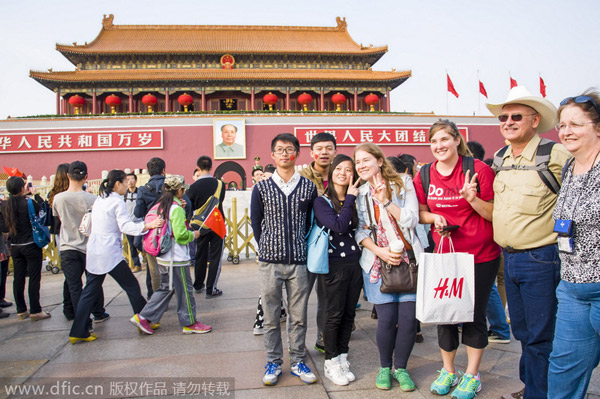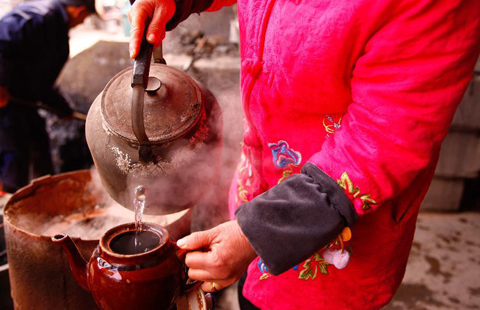Blue-sky thinking can significantly improve the fortunes of tourism
By Zhang Chunyan (China Daily) Updated: 2014-11-25 07:39
 |
|
Chinese and foreign tourists pose for photos on the Tian'anmen Square before the National Day holiday in Beijing, China, Sept 30, 2014. [Photo/IC] |
A lot of business will benefit when tourism is thriving. Clean air, niche products and integration advantages are the important improvements that China need to make to attract more inbound tourists.
In recent years, high-spending Chinese visitors have generated a windfall for many countries as the nation becomes the world's largest outbound tourism market.
At the World Travel Market in early November, travel organizations and agents from around the world said they wanted to lure more Chinese visitors.
All tourism-related businesses, such as retailers, restaurants and hotels, are excited about the prospect of increased Chinese tourist inflows that will help their countries' economies recover.
But things are very different for China's inbound tourism market, which is struggling amid rising concern about issues such as air pollution.
According to a report by the China Tourism Academy in October, the number of inbound tourists reached 129.08 million in 2013, down 2.5 percent year-on-year.
About 75 percent of inbound tourists were satisfied with their visits in 2013, down more than 11 percentage points from the previous year. Some overseas tourists expressed dissatisfaction with the air quality and barrier-free facilities for the disabled, among other issues.
The gap between inbound tourism revenue and the generous spending by Chinese shoppers abroad is huge.
To attract more foreign visitors, the first thing that China needs to do is deal with air pollution. Major cities such as Beijing and Shanghai are often under a cloud of heavy smog. Chinese and foreign visitors alike complain and worry about it.
Photos of runners in a recent Beijing marathon wearing masks are widely available online.
- Cash crunch fans expectation on RRR cut
- US extends antidumping duties on China's thermal paper
- Modern food van with ancient look in Shanghai
- China home prices continue to cool in November
- Asia's top 3 billionaires all Chinese
- Old investment remedy the treatment for China's "new normal"
- China's solar sector opposes US anti-dumping ruling
- BMW to recall 846 cars in China
















